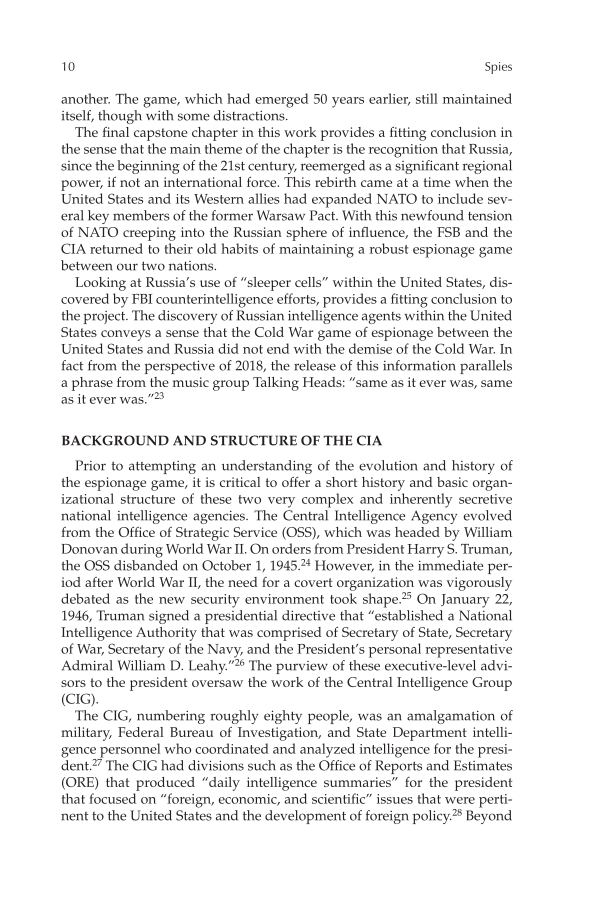10 Spies another. The game, which had emerged 50 years earlier, still maintained itself, though with some distractions. The final capstone chapter in this work provides a fitting conclusion in the sense that the main theme of the chapter is the recognition that Russia, since the beginning of the 21st century, reemerged as a significant regional power, if not an international force. This rebirth came at a time when the United States and its Western allies had expanded NATO to include sev- eral key members of the former Warsaw Pact. With this newfound tension of NATO creeping into the Russian sphere of influence, the FSB and the CIA returned to their old habits of maintaining a robust espionage game between our two nations. Looking at Russia’s use of “sleeper cells” within the United States, dis- covered by FBI counterintelligence efforts, provides a fitting conclusion to the project. The discovery of Russian intelligence agents within the United States conveys a sense that the Cold War game of espionage between the United States and Russia did not end with the demise of the Cold War. In fact from the perspective of 2018, the release of this information parallels a phrase from the music group Talking Heads: “same as it ever was, same as it ever was.”23 BACKGROUND AND STRUCTURE OF THE CIA Prior to attempting an understanding of the evolution and history of the espionage game, it is critical to offer a short history and basic organ- izational structure of these two very complex and inherently secretive national intelligence agencies. The Central Intelligence Agency evolved from the Office of Strategic Service (OSS), which was headed by William Donovan during World War II. On orders from President Harry S. Truman, the OSS disbanded on October 1, 1945.24 However, in the immediate per- iod after World War II, the need for a covert organization was vigorously debated as the new security environment took shape.25 On January 22, 1946, Truman signed a presidential directive that “established a National Intelligence Authority that was comprised of Secretary of State, Secretary of War, Secretary of the Navy, and the President’s personal representative Admiral William D. Leahy.”26 The purview of these executive-level advi- sors to the president oversaw the work of the Central Intelligence Group (CIG). The CIG, numbering roughly eighty people, was an amalgamation of military, Federal Bureau of Investigation, and State Department intelli- gence personnel who coordinated and analyzed intelligence for the presi- dent.27 The CIG had divisions such as the Office of Reports and Estimates (ORE) that produced “daily intelligence summaries” for the president that focused on “foreign, economic, and scientific” issues that were perti- nent to the United States and the development of foreign policy.28 Beyond
Document Details My Account Print multiple pages
Print
You have printed 0 times in the last 24 hours.
Your print count will reset on at .
You may print 0 more time(s) before then.
You may print a maximum of 0 pages at a time.


































































































































































































































































